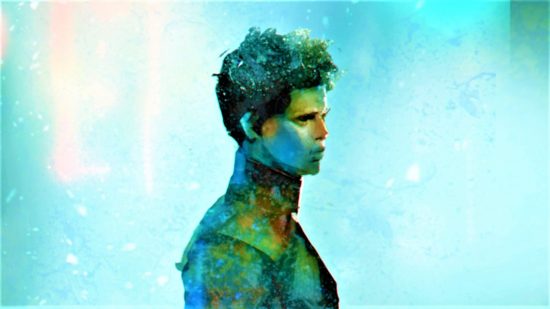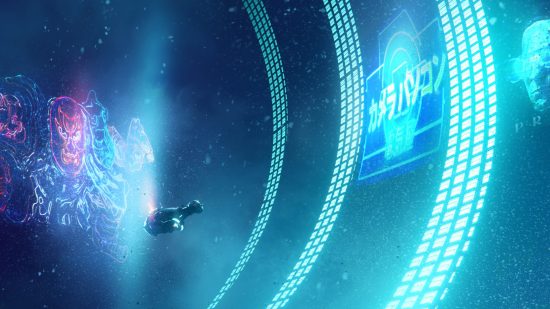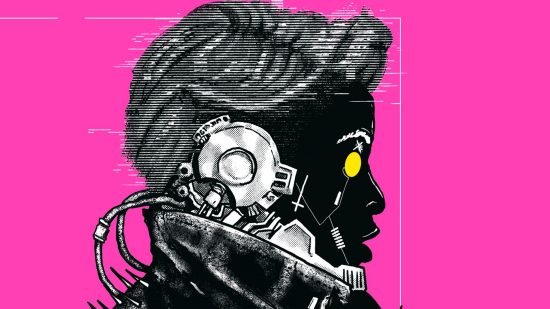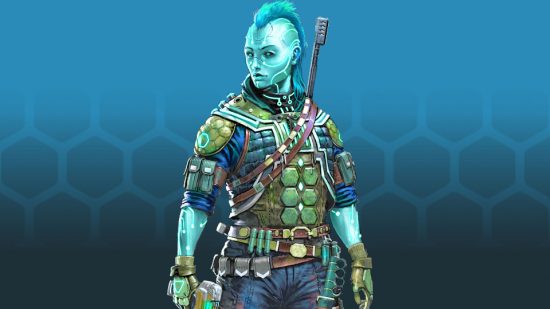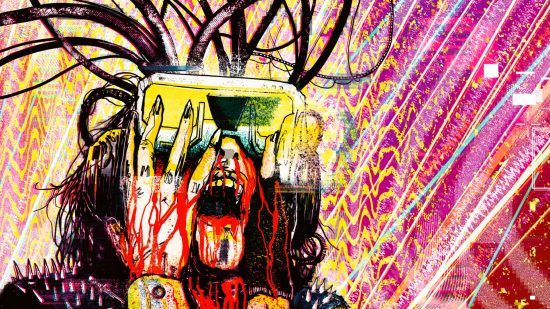Disruptive technologies are called so for a reason. Innovations often arise and threaten to alter the way our world works – whether that world is the entire planet or just your D&D party. Yes, despite tabletop gaming’s love of analogue, these emerging technologies keep trying to breach our hobby’s borders. And while we’ve (mostly) successfully shrugged off NFTs and blockchain in the past, there’s something different about AI art in tabletop RPGs.
It offers more than just novelty; AI software has the power to completely change how the best tabletop RPGs are produced. However, like in any sci-fi story, when computers could end up replacing humans, we must question whether those powers will be used for good.
RPG publishers are already facing legal and ethical threats from AI. Multiple firms outright banning AI content have proved that the community remains resistant to technological change, but tabletop gaming might not be able to hold the door forever. We spoke to several TTRPG publishers (and one games lawyer) about the current threats AI art poses, as well as what its future might look like.
First, a little backstory. AI art refers to any digital artwork created by software without human input. Visual art is one of its most popular applications, but text and music also come under AI art’s umbrella. Many of these programs generate content based on text prompts submitted by the user. The AI often ‘learns’ to create art by trawling the internet for real art to mimic.
The concept of AI art has been around since the ‘60s. However, it surged in popularity around 2022, when software like Dall-E 2, Midjourney, and Stable Diffusion made it easier for anyone to generate AI art. AI art became free and easy – and the AI art was actually good. The algorithm is now capable of creating text and images that are almost as believable – and maybe even beautiful – as those created by human hands.
With AI so suddenly accessible, it wasn’t long before the tech made its way into the tabletop space. Gamers used AI to design Warhammer 40k minis, run D&D games, and build MTG decks. Heck, AI can even make David Attenborough narrate a Tyranid invasion (see below).

These experiments were all in the name of good-natured curiosity – the desire to understand just how much AI is now capable of. However, others also saw a financial opportunity. AI art could drastically reduce the cost of producing a tabletop game. With automated text and images, there was no need to pay living writers and artists.
So far – at least in tabletop RPGs – that supposed boon sparked a backlash that halted AI art in its tracks. Designers who planned to supplement games with AI art quickly backtracked, and multiple major publishers have banned AI-generated content from their products. Call of Cthulhu’s Chaosium banned AI content in December 2022, with Pathfinder publisher Paizo also condemning AI in March 2023.
While Paizo and Chaosium did the most public damning of AI art, they aren’t the only publishers banning it. “We see several problematic issues with AI art, so Free League doesn’t use it and doesn’t plan to”, Free League co-founder Tomas Härenstam tells Wargamer.
Similarly, Modiphius co-founder Chris Birch tells Wargamer “At Modiphius we are not using or accepting AI-generated art and text”. “Modiphius has already made it clear in its community content program World Builders that no AI art is allowed.”
Ethics is the word on everyone’s lips. Chaosium’s ban cites a concern “about the ethics of AI art”, and vice president Michael O’Brien tells Wargamer the ban was based on “concerns from many of the artists we work with, who are concerned about the impact of AI art on their livelihoods”.
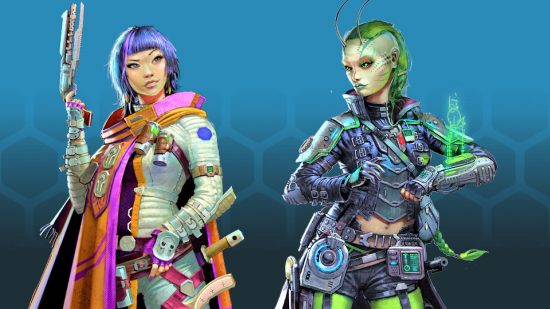
“A key concern is the ability of artists to maintain control over use of their creations”, he adds. “There needs to be a system in place to recompense artists for inclusion of their work in AI art databases, and there needs to be clarity on the copyrightable status of AI art.”
Here, O’Brien touches upon the legal ramifications of AI art as well as the ethical ones. AI that produces commercial art based heavily upon the creations of a person brings up many questions about copyright and ownership. According to Anna Poulter-Jones, specialist games lawyer at UK law firm Sheridans, the big threat comes from data scraping and how that meshes with current intellectual property laws.
“[AI] is trained on billions of images, and these images are largely not out of copyright”, she tells Wargamer. “When we talk about scraping, what’s essentially happening is they’re harvesting the internet to extract whatever data can be found”, she explains. “In AI data sets, this is often done through indexing or searching through keywords and metadata. Within that, there is usually a moment, even if only for a second, where the images are downloaded – and that’s where you’d have potential copyright infringement.”
“We’re starting to see AI platforms getting into hot water”, Poulter-Jones says, “as they’re allegedly trained using scraped data and they’re offering the output of their programs for commercial purposes”. And, while the end-user of an AI program isn’t the person actually breaking copyright laws, Poulter-Jones says it’s important to be cautious.
“You’ll see [AI platforms] starting to include words to try and cover themselves in case of an IP infringement”, she tells Wargamer. “Something like the right to recover costs if they receive a claim for IP infringement based on your use of works generated on their platform – they’re trying to put the liability on the user.” “I mean, it’s arguable how successful they’d be”, she adds, “but they’re certainly trying to protect themselves through terms and conditions”.
Despite the threats, the actual legislation around AI art is unclear – and inconsistent. Poulter-Jones says the UK government has been reasonably pro-AI and is leading with a “principles-based” approach (which is essentially a case-by-case basis). Meanwhile, Modiphius’ Chris Birch points to a recent ruling from the US Copyright Office which says AI images cannot be protected by copyright law.
Given the potential threats, legal grey areas, and rapidly advancing technology, it seems prohibiting AI content is a sensible move for any RPG publisher. Poulter-Jones says, at this stage, focusing on the ethical implications over commercial ones is also a strong move.
“The statements made by Paizo and Chaosium are led by the ethics: what feels right”, says Poulter-Jones. “This is probably quite a sensible way to go, given the ambiguity around where we stand from a regulatory perspective.”
These statements were never just about commerce, though. Paizo and Chaosium acknowledge the potential impact AI has on the RPG community – a group that has been hostile to emerging technologies. AI has received a similar response, it seems, as O’Brien notes the fan (and artist) response to Chaosium’s AI ban has been “overwhelmingly positive” so far.
Perhaps this resistance to AI is built into the very core of the tabletop roleplaying hobby. “These games are about telling and sharing human stories”, Poulter-Jones tells Wargamer. “It’s a very personal, human thing; not a consumer thing.” “You also want to feel that human connection with the content”, she adds. “I think that’s why the TTRPG space is particularly heated compared to other industries when discussing AI.”
Despite being resistant to adopting AI, tabletop gaming probably can’t avoid the technology forever. It’s already being used in less ethically dubious ways: Chaosium has adopted AI technology in the form of the Elder chatbot, for example. This aims to help players search for game rules quickly – and since it’s all based on Chaosium material, there’s no IP infringement in sight.
When asked about the future of AI art, Poulter-Jones says “I don’t think there’s any fighting the tide on this thing”. “The law hasn’t caught up with technology, which is often the way, but we’ll learn to live with this new technology.” “I think we’ll probably see more of a licensing model come to the fore to legitimize the datasets for commercial use”, she adds.
“AI art is a Pandora’s box that will never be shut”, Birch tells Wargamer. “The challenge is to find a way for artists and writers to remain in control of the creative process in a legal and ethical way.”
Wizards of the Coast and Paizo were contacted for comment for this article, but Wargamer did not receive a response.
For more on AI, we spoke to the designer of the groundbreaking Gloomhaven board game – who says “AI art feels like theft”. And, for more RPG tools, here are our DnD classes and DnD races guides to help you get started with DnD character creation.
